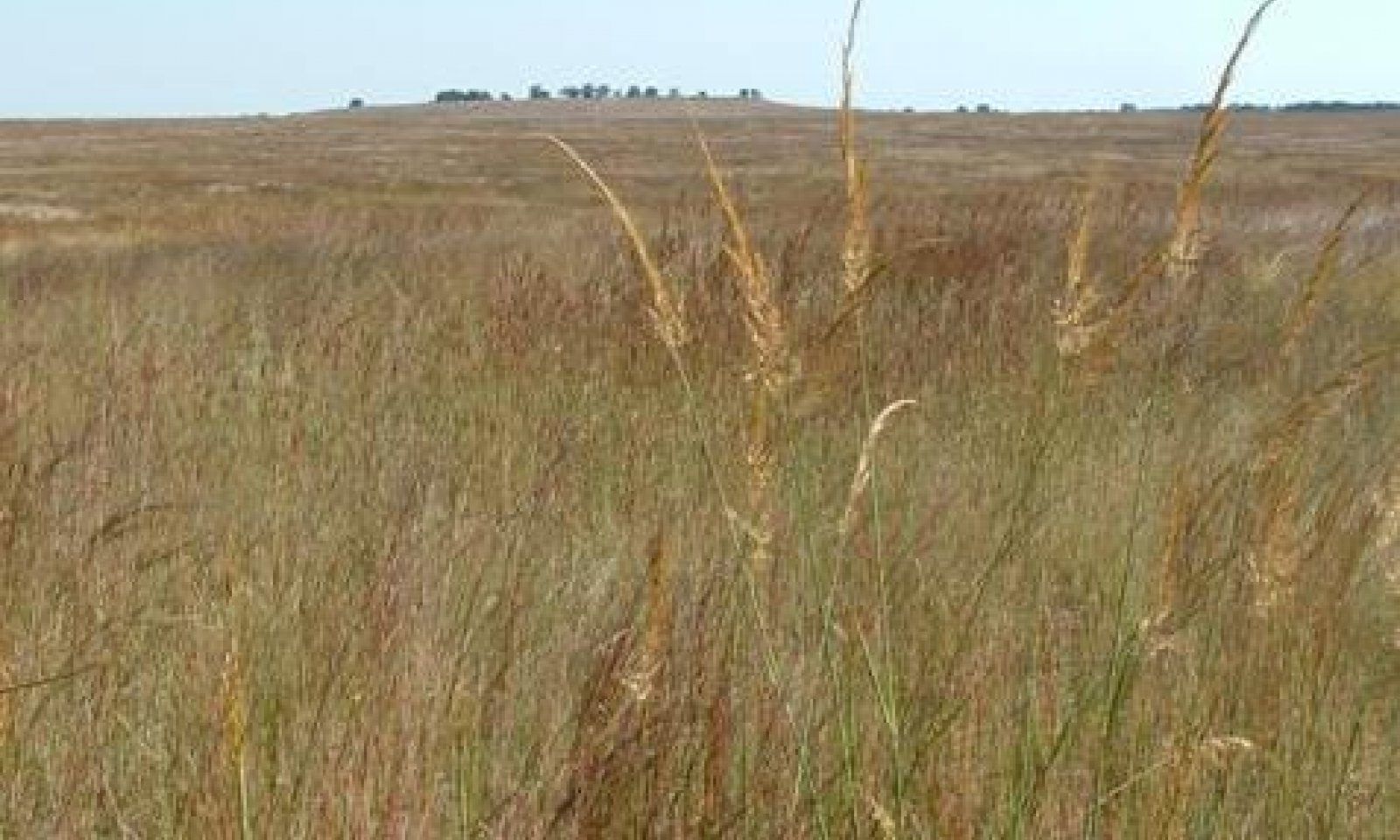
Loamy 26-33" PZ
Scenario model
Current ecosystem state
Select a state
Management practices/drivers
Select a transition or restoration pathway
- Transition T1A More details
- Transition T1B More details
- Restoration pathway R2A More details
- Transition T2A More details
-
No transition or restoration pathway between the selected states has been described
Target ecosystem state
Select a state
State 1
Prairie State - Reference



Description
The Loamy ecological site is a true Tallgrass Prairie Community. These gently rolling, almost treeless prairies amazed early explorers and pioneers travelling through this region. They often referred to these prairies as a “sea of grass”. In pristine conditions, the site is dominated by tallgrasses. Midgrasses are also significant components of the site. Forbs were common to the site. Trees and shrubs were infrequent on the Loamy site in reference conditions. Annual production ranges from 3000 to 6500 pounds per acre.
As Indiangrass and big bluestem decline because of uncontrolled grazing or other disturbances, they are initially replaced by little bluestem, which eventually dominates the site and gives rise to Little Bluestem Dominant Community. Midgrasses and forbs begin to increase. Shrubs begin to encroach from adjacent sites. This little bluestem dominant community is the one that is most commonly associated with the Loamy ecological site today. Prescribed burning and prescribed grazing is needed to enable the site to return to the true tallgrass prairie community. Continuous grazing, particularly when coupled with increased stocking rates, increases the dominance of little bluestem. Annual production ranges from 2400 to 6000 pounds per acre.
The Midgrass Community is comprised of various midgrass species. Western ragweed and broomweed become the dominant forbs. The density of shrubs and other woody plants continues to increase on the site. Annual production ranges from 1700 to 3300 pounds per acre.
Submodel
Description
The Shrubland Community is dominated by midgrasses and shortgrasses. Broomweed and other annual forbs increase significantly. Mesquite, pricklypear, and lotebush invade the site and woody canopy may exceed 25%. Annual production becomes very erratic and usually ranges from 1000 to 2000 pounds per acre.
Submodel
Description
The Converted Land Community has been cultivated for cropland or pastureland purposes. Small grain or forage sorghum may be cropped. Permanent native and introduce pasture may also be planted. Sometimes the community may be abandoned and let “go back” to native species encroached by woody species.
Submodel
Mechanism
With abusive grazing, no fires, and no brush management, the Prairie State will transition into the Shrubland State.
Mechanism
With Seedbed Preparation, Range Planting, Pasture Planting, and Crop Cultivation, the Prairie State will transition into the Converted Land State.
Mechanism
The restoration occurs from the Shrubland State to the Prairie State by the use of various conservation practices including Prescribed Grazing, Prescribed Burning, Brush Management, and Range Planting.
Relevant conservation practices
| Practice | External resources |
|---|---|
|
Brush Management |
|
|
Prescribed Burning |
|
|
Prescribed Grazing |
|
|
Range Planting |
Model keys
Briefcase
Add ecological sites and Major Land Resource Areas to your briefcase by clicking on the briefcase (![]() ) icon wherever it occurs. Drag and drop items to reorder. Cookies are used to store briefcase items between browsing sessions. Because of this, the number of items that can be added to your briefcase is limited, and briefcase items added on one device and browser cannot be accessed from another device or browser. Users who do not wish to place cookies on their devices should not use the briefcase tool. Briefcase cookies serve no other purpose than described here and are deleted whenever browsing history is cleared.
) icon wherever it occurs. Drag and drop items to reorder. Cookies are used to store briefcase items between browsing sessions. Because of this, the number of items that can be added to your briefcase is limited, and briefcase items added on one device and browser cannot be accessed from another device or browser. Users who do not wish to place cookies on their devices should not use the briefcase tool. Briefcase cookies serve no other purpose than described here and are deleted whenever browsing history is cleared.
Ecological sites
Major Land Resource Areas
The Ecosystem Dynamics Interpretive Tool is an information system framework developed by the USDA-ARS Jornada Experimental Range, USDA Natural Resources Conservation Service, and New Mexico State University.




